WELCOME TO VIETNAM


CLIMATE
Vietnam is located in both a tropical and a temperate zone. It is characterized by strong monsoon influences, but has a considerable amount of sun, a high rate of rainfall, and high humidity. Regions located near the tropics and in the mountainous regions are endowed with a temperate climate.
Under influence of monsoon, and further because of the complicated topography, the climate in Vietnam always changes in one year, between the years, or between the areas (from North to South and from low to high). The climate in Vietnam is also under disadvantage of weather, such as typhoons (6-10 storms and tropical low atmosphere in year, floods and droughts are threaten the life and the agriculture). The annual average temperatures range from 220C to 270C. In comparing with the countries located in the same longitude in Asia, the average temperature of Vietnam in winter is colder and in summer is cooler.
Here are the principal characters of climate of Ha Noi and Ho Chi Minh City:

DRESS CODE
FORMAL
Talking about formal dress code, every visitor would first think about traditional dress. The National Dress of Vietnam is ÁoDài /ˈaʊjaɪ/, means a long dress. It has been in existence for ages, from the beginning of the 18th century. Right from the beginning, the ÁoDài has gone through several alterations; however its basic form, consisting of a long flowing skirt, remains the same even now. Nowadays, the ÁoDài is worn by both men and women, especially during all festive occasions, or even at work such as most of senior schools. More than anything else, it is still the one and only marriage trousseau.
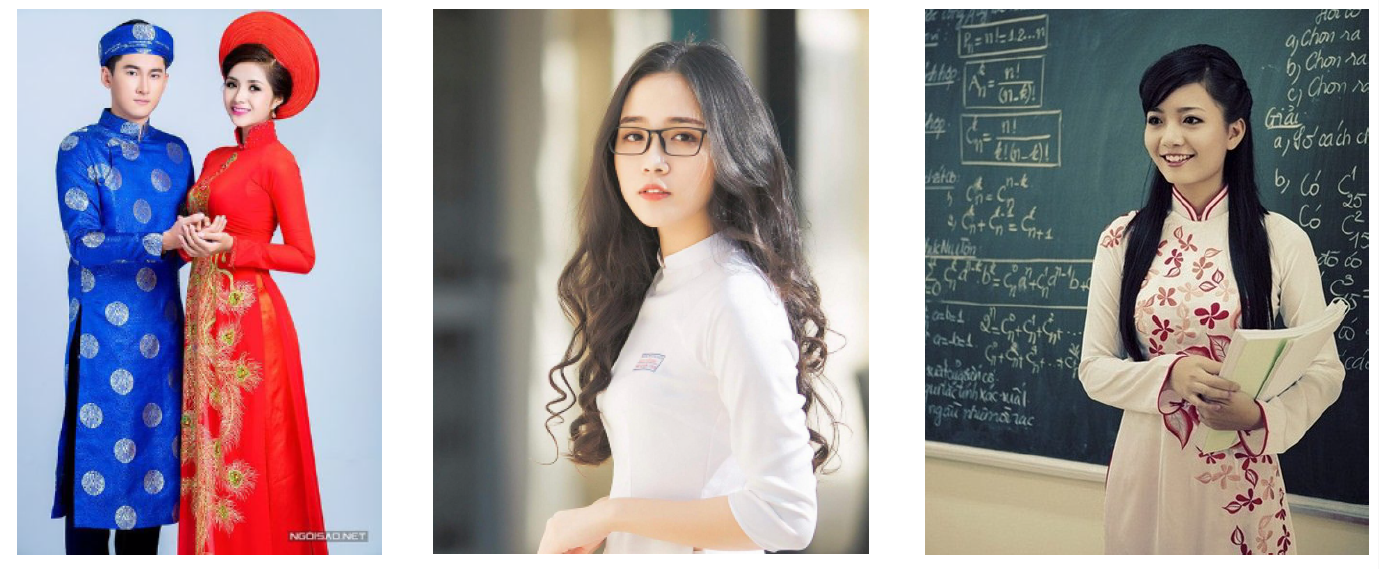
In recent years, young females wear fusion ÁoDàias their clothes for hanging out. The traditional ÁoDài is the set of the long dress worn over loose pants, but the fusion one is worn with skinny jeans, or skinny pants, or even skirt!

Vietnamese always dress formally in the special occasions such as: wedding, meeting, ceremony, etc. or even at work. Below are some more examples for the smart attire besides the ÁoDài.


INFORMAL / CASUAL
Modern Vietnamese fashion has been subjected to a lot of western influence so the dress code is very casual and relaxed. In Vietnam, there are only a few sanctuaries (pagodas, churches, temples, etc.) that require specific dress code. For most tourist places, you can enter without worrying about what you are wearing.
In many Vietnamese families, it is considered offensive to wear shorts, dresses, and skirts that bare too much skin, especially in the areas of the thighs, and chest. A comfortable sleeveless T-shirt and a good pair of shorts or jeans would have enough coverage.
Here are some recommended casual clothes that you can wear at home or when hanging out.
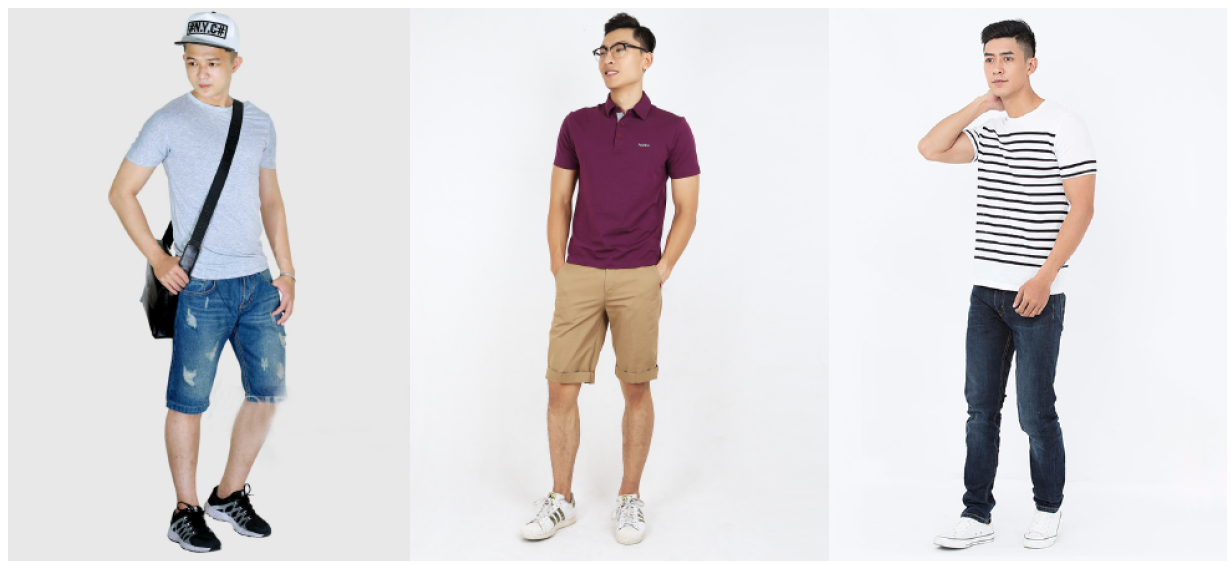
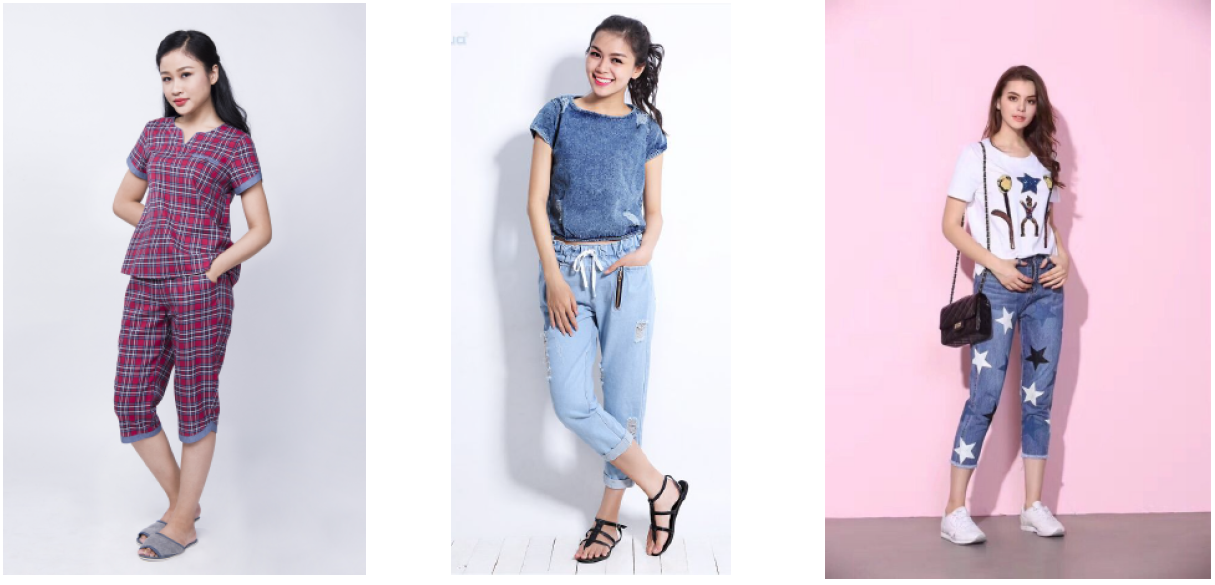
SCHOOLS AND UNIVERSITIES
Every school has its 2 own uniforms: for everyday and for P.E. class. Some schools require female students to wear ÁoDài. When going to school, you must wear uniform. On the left of the shirt, below the collar, you will have to sew the label with your name (the schools sell that label). If you study in Ha Noi, the schools have uniform jackets for winter. Meanwhile, when it is cold in Ho Chi Minh City, you can wear your own coat or jacket.

Almost colleges / universities in Vietnam allow students to wear casual clothes (except for shorts and sleeveless shirts). Conversely, it’s a must to wear P.E. uniform for P.E. class.
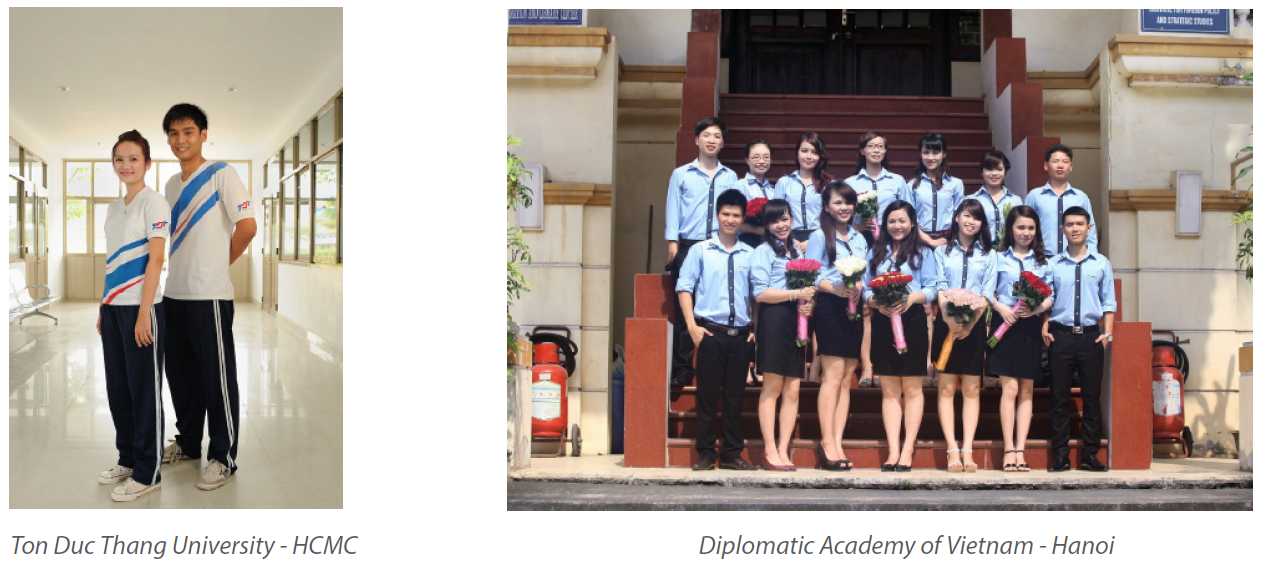
Funny fact
Vietnamese women are also well aware of the effects of the tropical sun on their skin, and a sun tan is not admired. You’ll see young women on bikes wearing elbow length gloves and masks to avoid the sun. With the suntan lotion issue, it depends on where and when you are planning to go.

SHOPPING AND DINE-OUT
Get ready for shopping? One must-have thing is MONEY!!

Vietnam Dong (VND) is the only currency that can be used in Vietnam for trading. Foreign money can be exchanged in banksand gold stores.
1 USD = 23,000 VND
Note: This is the approximate exchange rate. It might be changed even every hour.
In both Ha Noi and Ho Chi Minh City, it’s not difficult to find grocery stores with goods from foreign countries. You can easily find some famous brands like Zara, Channel, Gucci, Star Bucks, McDonald, KFC, Circle K, Family Mart, Seven Eleven, etc.
Our traditional shopping and dining-out waysare going to the markets and eating street foods. You can see many people with their own small enterprise on the pavements. We also recommend some foods that you should try at least once.
1. Bánh Mì /ˈbeɪn mi:/
“Bánh mì” is essentially a really nice baguette sandwich. Its cover is crispy and inside is soft. It is usually stuffed with Vietnamese sausage, ham, char-siu pork, pork / chicken floss, “ốp la” /ˈoʊp la/ (sunny-shine egg). Its taste is made with pickled sliced carrot, cucumber, cilantro, and a little bit soy sauce. Those topping is for the traditional “Bánhmì”. There are some more kinds of “Bánh mì”fusion which are stuffed with grilled pork / beef,“chả cá” /tʃæˈkæ/(fried fish cake), Chinese style roasted pork or pig skin. People normally eat “Bánh mì” for breakfast and supper.
Price: 12,000 – 40,000 VND

2. Phở /ˈfɜː/
The key to Vietnam’s best-known culinary export boils down to a rich, fragrant broth made from simmering beef or chicken bones for hours and flavored with star anise, cinnamon bark and char-roasted onions and ginger. Choose from beef or chicken, and Saigon (sweeter) or Hanoi-style (lighter) versions. Beef “Phở” can typically include raw sliced beef that’s cooked when it meets the piping hot broth, cooked brisket, meatballs, tripe, flank, fatty brisket and tendon. If you’re not a terribly adventurous eater, the “tái chín”/taɪ ˈtʃi:n/ with raw slices of round steak and well-done brisket makes a good combination. Pick the leaves off some fresh herbs (usually basil, rice paddy herb and sawtooth coriander) and add them to the broth to release their aromatic flavors.
Price: 25,000 – 50,000 VND

3. Xôi /ˈsɔɪ/
Savory sticky rice is less of an accompaniment to meals in Vietnam; it is more a meal itself. The glutinous staple comes with any number of mix-ins (from slivers of chicken or pork to fried or preserved eggs), but almost always with a scattering of dried shallots on top.
Price: 10,000 – 30,000

4. Gỏi đu đủ /ˈgɔɪ du: dʊ/
Vietnamese aren’t big on Western-style salads with mixed raw vegetables. The dish that comes closest is “Gỏi Đu Đủ”, a heap of shredded green papaya topped with some type of protein (beef jerky orboiled porkand shrimp), fresh herbs, and crispy shrimp crackers, all served with a fish sauce-based dressing for a crunchy, light and healthy snack. If you enjoy Thai salads, you need to try this.
Price: 20,000 – 30,000 VND
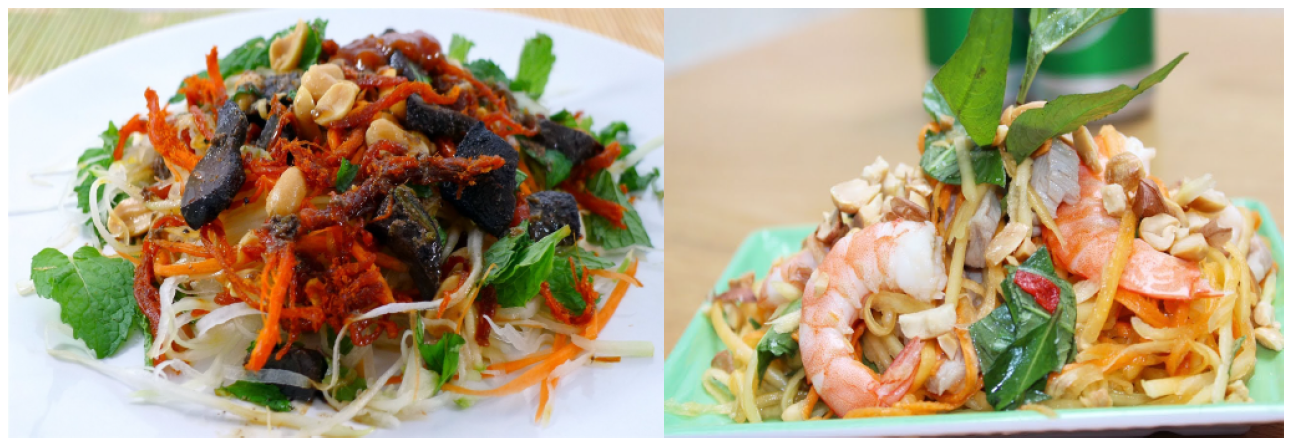
5. Gỏi cuốn /gɔɪ ˈkwʊn/
“Gỏi cuốn” is a dish traditionally consisting of pork, prawn, vegetables, rice vermicelli, and other ingredients wrapped in Vietnamese “bánh tráng” /beɪn ˈtræŋ/ (rice paper). In comparative with “chả giò” /ˈtʃæzɔ:/ (fried spring rolls), “Gỏi cuốn” is served at room temperature and are not deep fried or cooked on the outside. It can be served with hoisin sauce. This dish is a snack, but it is considered to be an appetizer in Vietnamese restaurant. Some people also eat it for their dinner or supper.
Price: 5,000 – 8,000 VND per roll

PUBLIC HOLIDAYS
Every country has its own public holidays, and Vietnam is not an exception. Public holidays in Vietnam are days when workers get the day off work and students are off school. If the holidays are on Sundays, everyone in Vietnam will get one more day off.
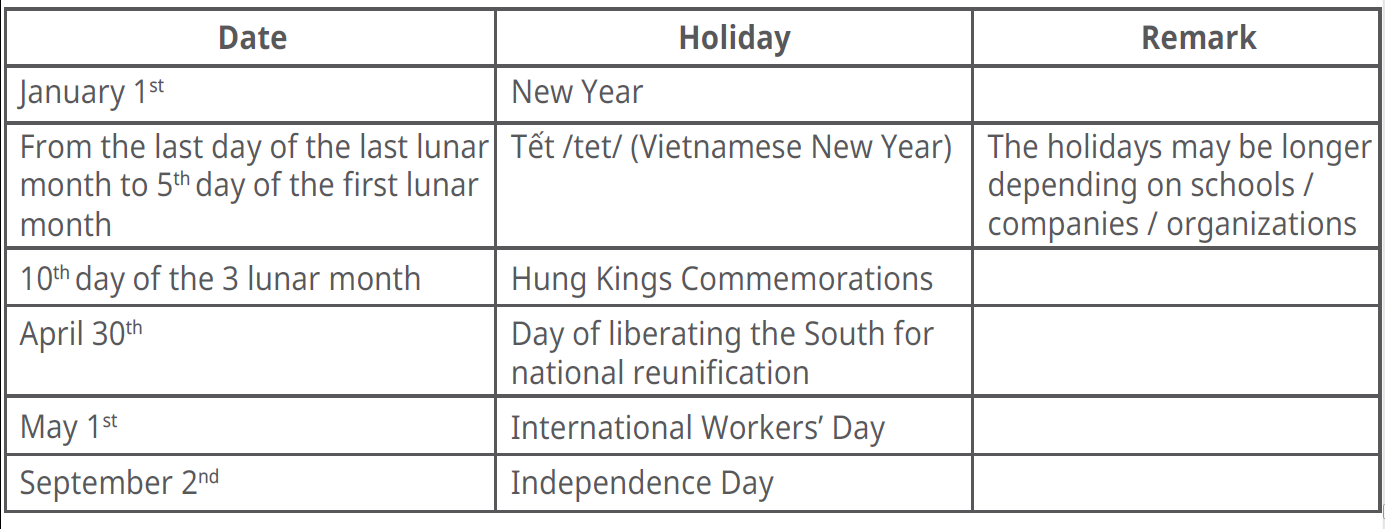
FAMILY
Relationships in Vietnamese family are more complicated than those of Western countries. About 80% of the families in Vietnam are extended families as many generations co-live to take care of each other. Each family has its own rules and values that members are supposed to confirm with. Vietnamese families are very hospitable. You will be warmly welcomed when coming and staying. Also, Vietnamese are eager to share their culture with you and know about your country’s culture.

EDUCATION SYSTEM
Education in Vietnam is overseen by the Ministry of Education and Training (MOET), and it is an extensive network of state-run schools for students from three years old to college-age. There are five categories: kindergarten, primary, lower secondary, upper secondary (referred as high school), and university level.
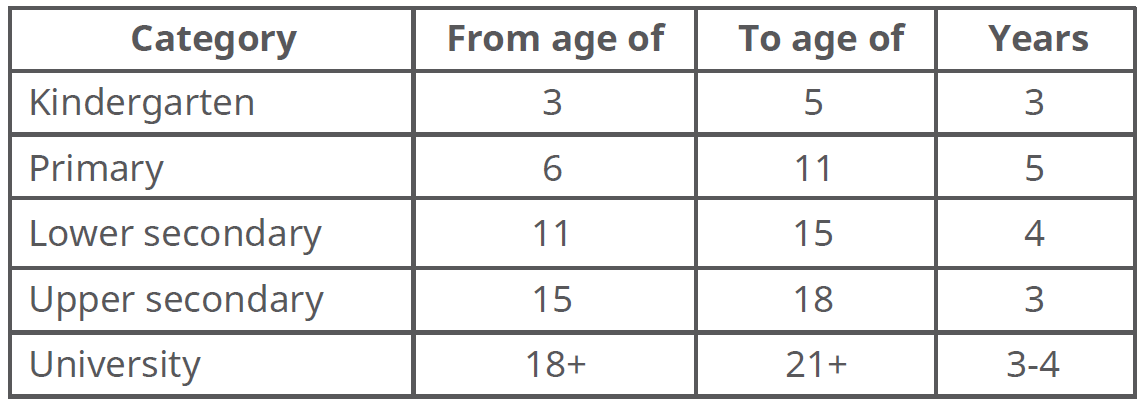
Vietnamese native students are accepted to enter the upper secondary schools only when they pass an entrance examination. Students follow a compulsory school curriculum in which they must complete a wide range of programs in order to graduate. There are subjects: Mathematics, Physics, Chemistry, Biology, Literature, History, Geography, Foreign Language, Civics, Information Technology, Physical Education, Technology, National Defense and Security.
The grading scale in Vietnamese high schools is out of 10 possible points. Below are the charts comparing to US grades.
High schools
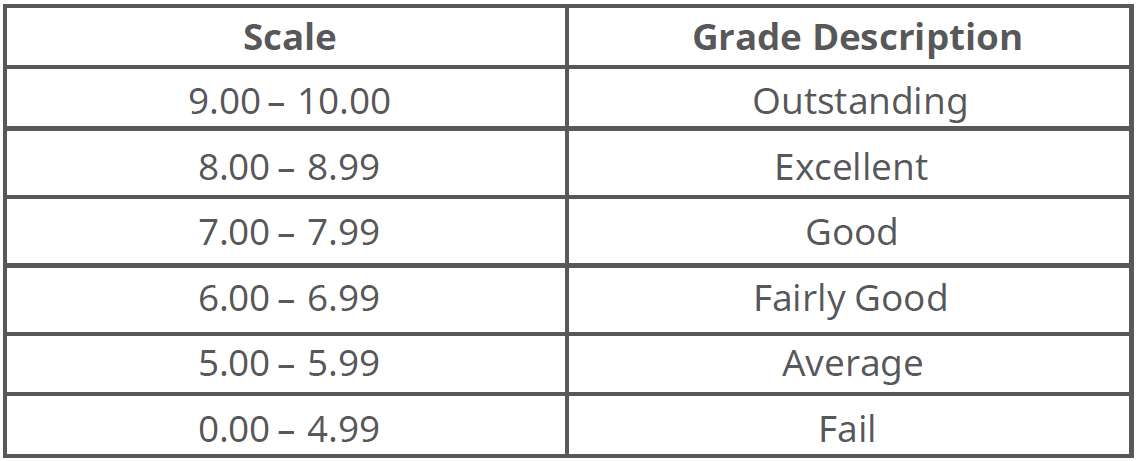
Colleges / Universities

LANGUAGE
There are 56 ethnic groups. 85.7% of the population is Kinh people. Kinh people, or Vietnamese, speak Vietnamese. In the latest 10 years, English language has become more and more popular in Vietnam than before thanks to the acquisition through Facebook, YouTube, etc. As a result, children, teenagers and young adults can speak English better than adults! We have been learning English since the ages of kindergarten but it is still not our second language. Everyone in Vietnam, at any age or with any job, can speak at least some English words or sentences for communication such as: Yes, No, Hello, Bye, Thank you! How are you? What’s your name? Where are you from? Can you speak Vietnamese?But don’t worry! Everyone can understand you by listening what you say together with looking at your body language and gestures.

TRAVEL
We are proud of our landscapes and travel destinations. Vietnam has mountains, mountainous areas, cities, coasts, islands that you want to discover. More than whomever, we do understand that you are eager to travel from North to South of Vietnam. However, please keep in mind that you are an exchange student, not a tourist. For this reason, all of your trips must be under your host family’s permission. It is probably significant to send “Travel Request Form” with the signature of representative of your host family to YFU Vietnam. We strongly recommend you buy a Vietnamese SIM card and do not ever let your phone be out of battery.

